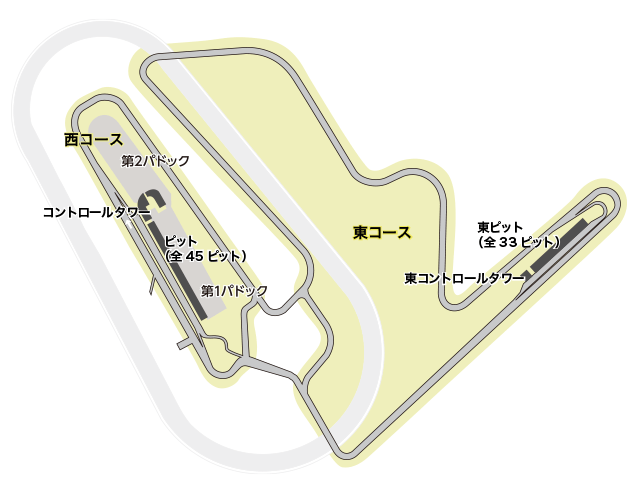- Menu
 What is Ene-1?
What is Ene-1?
The power source of the competition vehicle is a battery
The competition is powered by 40 AA rechargeable batteries.
AA rechargeable batteries are provided by Panasonic, who has been a sponsor since the first event.
Held at SUZUKA CIRCUIT and Mobility Resort Motegi
Mobility Resort Motegi will host the 'Ene-1 MOTEGI GP', while Suzuka Circuit will host the 'Ene-1 SUZUKA Challenge' and 'Ene-1' at two different locations.
The characteristics of the courses where the competitions are held at these two circuits are significantly different.
The 'Ene-1 SUZUKA Challenge' at Suzuka Circuit takes place on the full course of the historic Suzuka Circuit Racing Course (5.807 km per lap), which was established in 1962. With elevation changes and a mix of slow to fast corners, the course itself is challenging, requiring drivers to have experience, and it places a higher load on vehicles compared to Mobility Resort Motegi.

The stage of Mobility Resort Motegi (competition course) is a special course that runs the "Road Course (Full Course)" in reverse.
The stage of Mobility Resort Motegi (the competition course) is the 'Road Course' where many races, including the World Championship, are held.
The 'Ene-1 MOTEGI GP' was held on the 'Oval Course' until 2020, and from 2021 it has been held on the 'Road Course (West Course)', but in 2024 it will be held on a special course running in reverse on the 'Road Course (Full Course)'.
The 'Road Course' is 4.8 km long, and in its original forward direction, it features a course layout known as 'Stop & Go' with repeated deceleration, turning, and acceleration. In 2024, the event will be held in reverse direction, transforming the 'Downhill Straight' into an 'Uphill' section, requiring more power from the vehicles.
After reaching the top of the uphill straight, the section from the 'Hairpin Curve' to '130R' will be downhill. To navigate each corner at high speed, it is crucial to have strong braking performance for proper deceleration and to drive along the ideal racing line.
With no past data available, the 2024 Ene-1 has become an even more challenging course layout for drivers and mechanics. It continues to evolve as a venue that combines the aspects of a sport, competing in both 'Energy Management' and 'Speed'.

The competition vehicles are handmade
Vehicles participating in 'Ene-1' cannot be modified from commercially available vehicles.
Since there are no vehicles sold specifically for competition in advance, the vehicles for participation must be handmade from the start.
They will conceptualize and design, creating vehicles that comply with the competition rules themselves.
Some vehicles that have already participated in gasoline fuel economy competitions like the Eco Mileage Challenge have been modified to meet the regulations for participation.
The efforts that fully unleash creativity have turned into a valuable competition that takes shape as actual vehicles and leaves results.

Competition Method
The competition consists of two parts: "Time Attack (Qualifying)" and "Final Race".
Points based on the ranking of the "Time Attack (Qualifying)"
+
Points based on the ranking of the "Final Race"
= Overall Result
◆Time Attack (Qualifying)
This determines the entry rights and starting grid order for the "Final Race." Vehicles that do not finish the time attack will not be able to participate in the endurance race. Therefore, it is crucial to finish the time attack first.
◆Overall Points
To compete for the total points from the "Time Attack (Qualifying)" and the "Final Race", even if the ranking in the "Time Attack (Qualifying)" is high, a low ranking in the "Final Race" will not result in a high overall result.
Since charging the battery, which is the power source, is not allowed between the "Time Attack (Qualifying)" and the "Final Race", it is necessary to consider the distribution of battery capacity usage and manage energy with a pace strategy in the "Final Race".

- Menu
※Content is subject to change without notice.
※The photos and illustrations used are for illustration purposes only.












